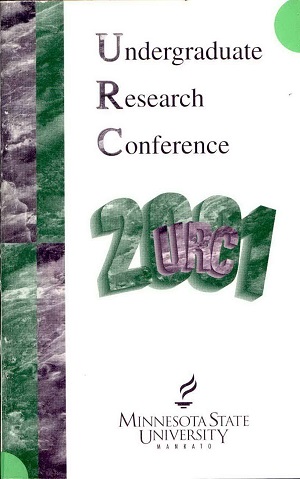Determining the Ploidy and Counting Chromosomes of Packera paupercula Using Stain and Squash Techniques on Microsporocytes Within Immature Anthers
Location
CSU
Student's Major
Biological Sciences
Student's College
Science, Engineering and Technology
Mentor's Name
Alison Mahoney
Mentor's Department
Biological Sciences
Mentor's College
Science, Engineering and Technology
Description
Members of North American genus Packera are easily identified from other plants but often difficult to separate from one another. Chromosome counting successfully differentiates among some specie and/or varieties. One species, P. paupercula, is currently divided into two varieties. Packera paupercula var. paupercula is geographically widespread and poly-morphic and var. crawfordii is a rare bog and flood plain endemic of the southeastern United States. A number of races of P. paupercula var. paupercula have been observed in the Midwest, some of which are poly-ploids. These races are probably distinct enough to recognize as varieties. The purpose of this study is to determine the ploidy of locally collected populations of P. paupercula using chromosome-counting techniques. Meiotic cells (microsporocytes) from immature anthers are stained with an aceto-carmine solution, teased apart from other cells under a dissecting microscope, mounted on a slide with Hoyer's mounting medium, squashed to reveal desired cells, and examined under a phase contrast microscope to determine ploidy and count chromo-somes. The data acquired in this experiment will be added to a larger systematic study currently being done on midwestem races of P. paupercula.
Determining the Ploidy and Counting Chromosomes of Packera paupercula Using Stain and Squash Techniques on Microsporocytes Within Immature Anthers
CSU
Members of North American genus Packera are easily identified from other plants but often difficult to separate from one another. Chromosome counting successfully differentiates among some specie and/or varieties. One species, P. paupercula, is currently divided into two varieties. Packera paupercula var. paupercula is geographically widespread and poly-morphic and var. crawfordii is a rare bog and flood plain endemic of the southeastern United States. A number of races of P. paupercula var. paupercula have been observed in the Midwest, some of which are poly-ploids. These races are probably distinct enough to recognize as varieties. The purpose of this study is to determine the ploidy of locally collected populations of P. paupercula using chromosome-counting techniques. Meiotic cells (microsporocytes) from immature anthers are stained with an aceto-carmine solution, teased apart from other cells under a dissecting microscope, mounted on a slide with Hoyer's mounting medium, squashed to reveal desired cells, and examined under a phase contrast microscope to determine ploidy and count chromo-somes. The data acquired in this experiment will be added to a larger systematic study currently being done on midwestem races of P. paupercula.



